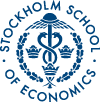No 0543: Trade Deficits in the Baltic States: How Long Will the Party Last?
Rudolfs Bems () and Kristian Jönsson Hartelius ()
Additional contact information
Rudolfs Bems: Dept. of Economics, Stockholm School of Economics, Postal: Stockholm School of Economics, P.O. Box 6501, SE-113 83 Stockholm, Sweden
Kristian Jönsson Hartelius: Sveriges Riksbank, Postal: Sveriges Riksbank, Research Department, SE-103 37 Stockholm, Sweden
Abstract: Since their opening up to international capital markets, the economies of Estonia, Latvia and Lithuania have experienced large and persistent capital inflows and trade deficits. This paper investigates whether a calibrated two-sector neoclassical growth model can explain the magnitudes and the timing of the trade flows in the Baltic countries. The model is calibrated for each of the three countries, which we simulate as small closed economies that suddenly open up to international trade and capital flows. The results show that the model can account for the observed magnitudes of the trade deficits in the 1995-2004 period. Introducing a real interest rate risk premium in the model increases its explanatory power. The model indicates that trade balances will turn positive in the Baltic states around 2010.
Keywords: Baltic states; international factor movements; non-traded goods; adjustment costs; dynamic general equilibrium
37 pages, First version: August 5, 2003. Revised: May 2, 2005. Earlier revisions: August 5, 2003, February 20, 2004.
Questions (including download problems) about the papers in this series should be directed to Helena Lundin ()
Report other problems with accessing this service to Sune Karlsson ().
RePEc:hhs:hastef:0543This page generated on 2024-09-13 22:19:41.

